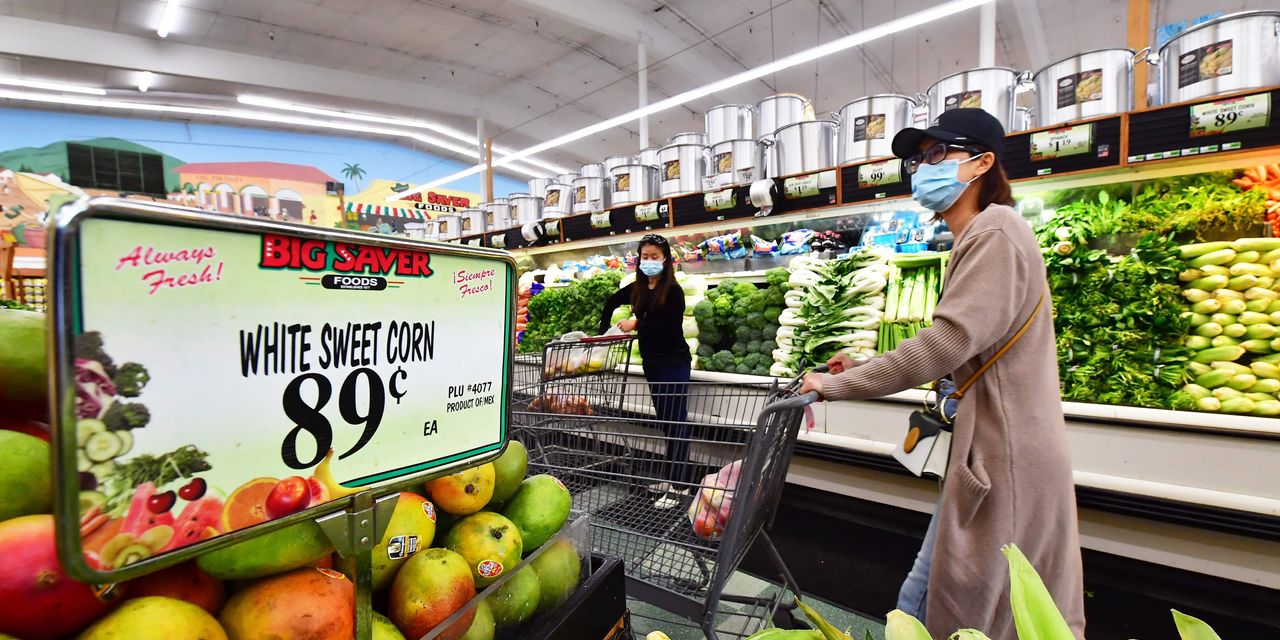The American consumer would like to know what’s next.
Sales at retailers fell flat in September, the government said Friday, another sign that the economy is likely to slow in the coming months as consumers pull back on spending in the face of 40-year high inflation and the end of pandemic-era government stimulus programs.
Retail sales, a major part of consumer spending, are closely watched as a sign of the mindset and financial health of consumers. They rose 8.2% on the year.
If people continue to tighten their purse strings into the holiday season, economists say it makes the prospect of a recession in 2022 even more likely. Retail sales were forecast to rise 0.3% in September, according to economists polled by The Wall Street Journal. Receipts increased by 0.3% if auto dealers are excluded. Automobile sales can skew the overall retail spending pattern.
Americans, who are finally getting their groove back after two years of a global pandemic, are understandably nervous about the economy and their own finances.
The fall in the stock market in 2022 took many people — and some analysts — by surprise, and jittery consumers are waiting for the other shoe to drop. With so many stressful events, more shoppers are sticking to essentials, economists say.
Retail stores are obviously concerned about the holiday shopping season and the mindset of the U.S. consumer, and they are tempting holiday shoppers early this year, said Ted Rossman, Bankrate.com senior industry analyst. “This week, Amazon
AMZN,
Target
TGT,
Walmart
WMT,
and others kicked off their holiday deals,” he said. He said next month will show further evidence of early holiday shopping.
While a majority of Americans (53%) still feel positive about their personal finances, that percentage fell by 11 percentage points over the past two years, according to a report released this week by life-insurance company Primerica. What’s more, three-quarters (75%) say their earnings are falling behind the rise in the cost of living, while 22% believe they will be better off financially a year from now.
“‘We are seeing an increasing reliance on credit with many middle-income families reporting that their credit-card debt has recently increased.’”
“We are seeing an increasing reliance on credit with many middle-income families reporting that their credit-card debt has recently increased,” said Glenn Williams, CEO of Primerica, speaking of the results of the survey. “Financial stress brought on by rising credit-card balances also has more families than ever before making only the minimum payments on their credit cards.”
Primerica’s “Middle Monitor Financial Security Monitor” is a quarterly national survey to monitor the financial health of people with annual household incomes of $30,000 to $100,000. More than one-third (37%) of the 1,546 people polled said they’re taking on more credit-card debt, a six-point increase since June’s survey and the highest number since quarterly data tracking began.
People aren’t just searching for bargains and switching grocery stores. Many are staying home and steering clear of the “buy now” button entirely. The latest data from the Financial Health Network, a nonprofit organization in Chicago, found that people’s financial health declined for the first time in the project’s five-year history, citing the end of pandemic-era benefits, inflation, and stock market volatility.
Stimulus checks, enhanced child tax credit, moratoriums in rents and student loans, among other programs, all helped people in the first two years of the coronavirus pandemic. Child poverty levels last year fell to a record low, the Census Bureau said last month. By itself, the child tax credit alone took 5.3 million people out of poverty, including 2.9 million children, the researchers said.
Still, people appear more willing to shop from the comfort of their own home. “Non-store retailers — basically the Census Bureau’s term for e-commerce shops — are faring better than most retail sectors,” Rossman said. “Their 11.6% annual increase in sales was second only to gas stations’ 20.6% rise, which can be attributed almost entirely to higher gas prices. E-commerce growth is a more positive story.”
